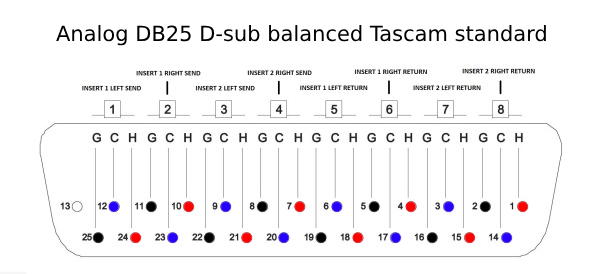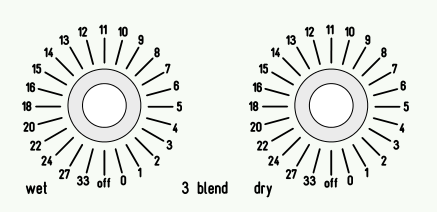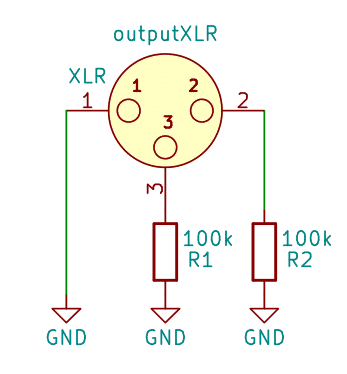FAQ General
Please use our online webshop or contact our worldwide dealers for placing orders.
If you want to order a custom product, please contact us by filling out the contactform or by sending an email to
More info on ordering can be found on the ordering page.
For our Insert Computer series and other stock products we are working with a selection of worldwide dealers.
Please check the where to buy page for your preferred DuTCH.audio dealer
You can also make use of our online-shop to order standard products. During placement of the order you can choose various payment and delivery options.
When using our online webshop. You can order the product and take care of the online payment right away. In case you prefer to not use the webshop or if you want a customized product, we will send you an invoice for the agreed upon price. This will be a 50% deposit or the full amount.
For the invoice, we need your full (company) name, adress, phonenumber and valid VAT number. You can pay using iDeal, paypal, creditcard, sofort and various other online options. It's also possible to pay by banktransfer. All details will be on the invoice.
Ofcourse you can also contact our worldwide dealer-network.
We mostly build products to order, we don't stock a lot of products. That is why we ask for some patience after your order. Useually the leadtime from order to shipment is about 4 weeks. This also depends on the amount of orders we have at that moment, but we will give you an estimate when ordering.
Ofcourse our worldwide dealer-network will most likely have products on stock.
The DuTCH audio IM series are based around modules and because of that, it’s possible to have a custom machine to fit your needs. Both 1u and 2u custom machines are possible. There are some physical limitations though. Please keep in mind that custom products will cost more then stock products and can not be cancelled.
More info on custom products can be found here.
The Insert Computer series can not be customized, except for the frontpanel color by request.
Yes, it's possible to order a custom RAL color for the frontpanel for 150 euro ex VAT. This is only the case for custom products, IC/Insert Computers and stock IM series can only be ordered in White or Black. Please state clearly what color you want in the field during online-ordering. Leadtime for a custom color will be longer then stock colors.
- We offer a standard 2 year limited warranty on all of our products.
- In the event that you or a third party has (partly) altered or repaired anything, the warranty will expire, and you will be held responsible for the damages caused by any possible misfunctioning of the product. Warranty repairs are only made by us or by a workshop we agree upon.
- We are not responsible for any malfunction of or damage caused by parts that are not produced by DuTCH.audio.
- If you choose to ship back a faulty unit to us you must contact us before you do so. We need the serial number (located on the back of the unit) to handle the repair and if warranty is still valid.
- The product should be returned in it's original package or packed in such a way that it is not damaged during the shipment with extra support for the rack ears. We are not to be held responsible for any damages during the shipment.
- The customer always pays the shipping cost to us.
- The customer is responsible for the product until it is delivered to us
- If we find that the product is flawless the customer will be charged 200 euro to cover our costs for examination and handling. The return costs will also be charged.
This agreement is governed by Dutch law only. Any disagreement, redemption or any other claim will be judged under Dutch law only.
You can download and find our terms and conditions (english) here.
DuTCH.audio is a small company and we useually don't stock finished products, so we dont have demo products available ourselves. But our worldwide dealer-network could help you with setting up a demo-unit.
FAQ Technical
Maximum input level passive: >+24dBu
Maximum input level active circuits (gain/MS/Blend): +24dBu
Even though it's no problem to run at higher levels, we suggest to run at max +20dBu, or even better +18dBu. This will result in the most transparent and best sound overall for most equipment.
We are sorry to inform you that this is physically not possible. As an example, an IM2.1 (so 2 units high) has 8 inserts. For each insert you will need 4 XLR's, so for 8 inserts you will need 8 x 4 = 32XLR's for just the inserts. Together with the inputs and outputs on a IM2.x makes a total of 40 XLR's. That will simply not fit a 2u backpanel. For a 1u unit with 6 inserts it's even worse.
That is why we use DB25 connectors for all inserts, since each DB25 basically has 8 XLR's at a fraction of the footprint. An 8 insert unit with XLR would need to be at least 3U high and a 1U unit would simply not even excist. Some people are afraid of more crosstalk or other issues with DB25, but this is not true.

Our products follow the analog Tascam DB25/DSUB standard which are harder to get then the digital version. A lot of times these cables are custom made or need to be modified (swap XLR's). That is why we can also deliver Grimm Audio cables which are pretty much the best cables you can get for a decent price and available at the exact lengths you need.
Grimm Audio TPR ‘Twisted Pair Reference’ cables are developed with physics in mind. Their design focuses on high RF immunity and low microphonics. The perfect symmetry of the cross-section and heavy shielding contribute to high RF immunity. Low microphonics is provided by a special interface layer under the shield and other construction details.
TPR delivers the most natural and least coloured transfer available. Get reference quality for a mainstream price.
For all our products we use the ANALOG DB25 D-sub Tascam standard.
One DB25 cable holds 2 stereo inserts (2x stereo send, 2x stereo return), so for 8 inserts you will need 4x DB25 cables.
There are various standards for DB25 D-sub cables, but the pinout and channel configuration is the exact same for all standards. The difference is that the channels vs sends/returns will be different. The analog DB25 tascam standard which we use, has the send/return swapped compared to the digital version.
This is the correct channel and send/return schematic:
Insert 1:
channel 1 - insert 1 - left send (male XLR)
channel 2 - insert 1 - right send (male XLR)
channel 5 - insert 1 - left return (female XLR)
channel 6 - insert 1 - right return (female XLR)
Insert 2:
channel 3 - insert 2 - left send (male XLR)
channel 4 - insert 2 - right send (male XLR)
channel 7 - insert 2 - left return (female XLR)
channel 8 - insert 2 - right return (female XLR)
We made a document with info and options, you can download it here.
This image shows the right pinout and connections.

We decided to go for a different then the one knob wet/dry knob approach for various reasons. After research with various well-known mastering-engineers, we all agreed that going for 2 controls (1x wet, 1x dry) is the best solution.
Most parallel processing uses one control for blending from wet to dry and uses a potmeter with percentages instead of dB's. The blend circuit we designed uses two separate controls for both wet and dry with stepped switches instead of one potmeter. The first steps on the stepped attenuators have 1 dB per step and the last steps have more course steps, the lowest step is -33dB. The off position mutes the wet or dry signal. This approach means, no channel imbalance, perfect recall, way better control and dB's instead of percentages. Another advantage is that it's pretty much impossible to AB between parallel processing and regular with one knob because there will always be a gain difference. With 2 controls you can adjust the dry and wet so that it's level-matched compared to the passive mode. You can then simply level-matched AB by pressing the blend button.
DuTCH.audio is the first and only company in the world offering this kind of parallel processing approach.
This is outdated information. Production from November 2023 and newer will always be with a stepped output attenuator unless specifically asked for an optional potmeter. When a potmeter is installed for the output section, the gain range is always +/- 10dB and this gain can also be used for bypass gain compensation when pressing both insert bypass and output gain. The old bypass gain compensation modules are NOT avalailable any more.
There are 2 different versions available for the IM1.1, IM1.2, IM2.1 and IM2.3, the S-verion and the bypass gain compensation (non S) version. Let me explain the difference.
Bypass gain compensation:
The bypass gain compensation has a potmeter and is used to compensate for gain loss when the inserts are bypassed. When you press the 'bypass offset' button all inserts will be bypassed and the gain compensation becomes active. With the potmeter you can compensate for the gain loss with a range of -10dB to +10dB *. This will be really handy for quick level compensated AB'ing between source and master with the press of just one button. The bypass gain compensation can not be used as an active output gain.
* older series had a gain range of -2 to +8dB
S-version (stepped output gain):
The S-version has a 23 steps bypassable active gain on the output with 0.5dB per step (range +/- 5.5dB) or switchable 0.25dB per step (range +/- 2.75dB). You can use this to drive the IM output into your AD at the exact gain you want. The gain can also be used to compensate for gain loss when bypassing the inserts, but you have to press two buttons (ins bypass and active gain) at the same time. The gain range is also more limited then the bypass gain compensation.
It's quite easy to label the pushswitches to your liking, it just needs a bit of practice. That is why we made this small manual in PDF format on how to do it properly.

Since most units will end up in a mastering environment and as being a 'picky mastering-engineer' myself I take great care in picking the best parts. To give you some examples of the parts used:
- Mlitary grade stepped switches (* digipots for IC series)
- Sturdy industrial pushswitches (used in airplanes and nuclear powerplants)
- Goldplated neutrik XLR's
- Goldplated industrial wurth DB25 connectors
- Meanwell industrial SMPS with extra regulators and filtering
- Omron hi-sensitive industrial sealed relays
- THAT and Analog Devices opamps (throughhole on sockets)
- Panasonic elco's
- Resistors with 0.1/0.5% tolerance
- Audiophile silver solder throughout
- Powdercoated frontpanel with laserengraving instead of (less durable) printing
* For the Insert Computer series we make use of the same parts with the biggest difference being that we don't use stepped attenuators/switches, but digital potmeters. We have done a lot of research and found the Analog Devices digipots to be the best available part for this.
Yes, that's possible though it's not always a good idea to just 'pop in' some other opamps. All opamps have their cons and pro's and some of them work great in certain circuits while they sound and behave differently in other circuits. We did a lot of research (among various mastering-engineers) on opamps and found that Analog Devices LT1468 to sound the best in the circuits we use. That is why we picked these opamps as our default opamps. All other circuits make use of THAT chips.
Our products are build around passive parts, but some parts are using active circuitry, like the active in/output, MS section and parallel/blend option. We make use of high quality THAT chips for that.
In some cases, equipment using vintage design topologies (basically using transformers) might damage DC-coupled (active) input stages. This could occur when the manufacturer is using 'floating outputs'. Capacitive charge might build up and that could discharge with a high voltage 'spike' which could blow up the precious chips during switching of inserts and/or active circuitry.
How to avoid this?
It's actually pretty simply and it will ony cost a few cents in parts to fix this issue. The floating output needs 100k 'bleeder resistors' from output to ground. You can also buy a specially designed XLR connector/terminator with those bleeding resistors build in. Google for '100K-CM-TERM'
How do I know if I have a floating output?
This only applies to equipment making use of output transformers. Please check with the manufacturer, they should know if it has a floating output or not.

Company
DuTCH.audio BV
Reeweg 40
3342 AB Hendrik Ido Ambacht
the Netherlands (route)